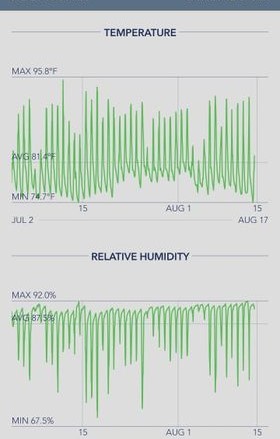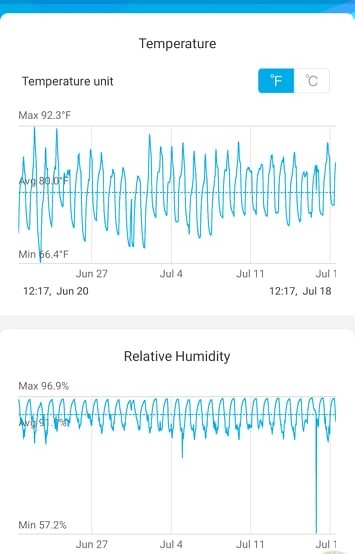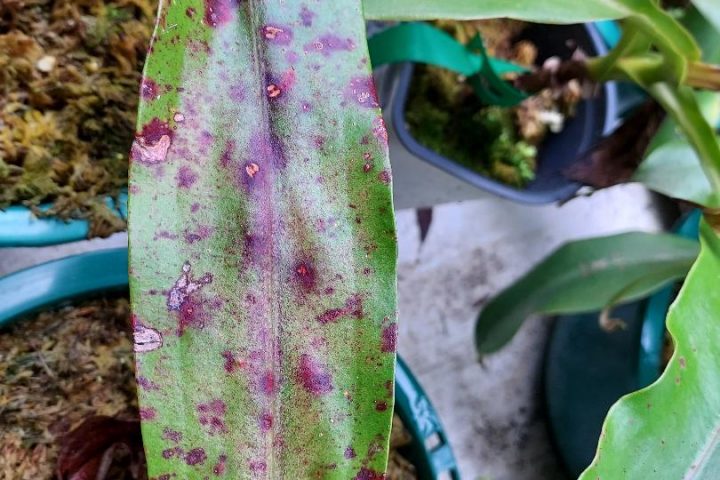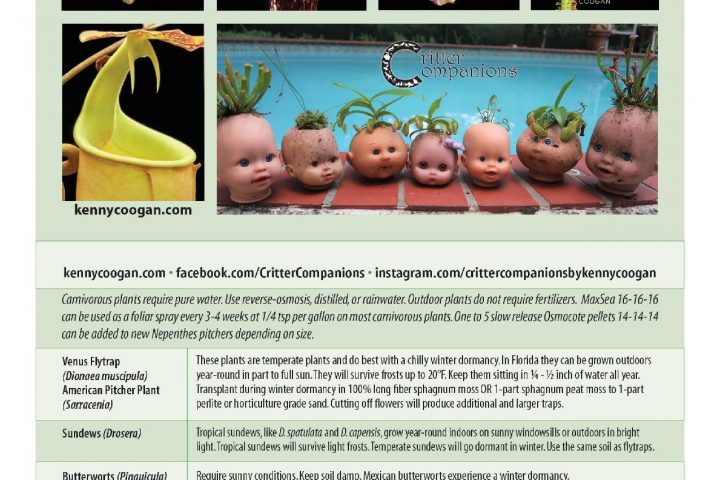Yes, stripped peristomes are pretty, but to us, the most impressive are Nepenthes with fangs! Learn how to grow Nepenthes bicalcarata, the fanged pitcher plant.
Nepenthes bicalcarata are wickedly gorgeous. With fangs dripping of nectar, they ooze charisma. Unfortunately, they are hard to come by and when we were starting out, it was hard to find reliable growing information. While we are one of a few vendors in the US that have Nepenthes bicalcarata for sale, we run out quickly. Two to three times a year we import from a Thai nursery. We offer them as a pre-order, whose details can be found here. We usually import around 60 seedlings (sometimes medium to XL) and sell out within 24 hours. And while Nepenthes bicalcarata like hot and humid conditions – you know like Florida – they do need some special attention. If they were easy, more people would grow them.
How to grow Nepenthes bicalcarata
N. bicalcarata needs 80-90F (average of 80F is fine) during the day and do not grow/do well if the temperature falls below 70 at night. N. bicalcarata (and N. ampullaria) are some of the first Nepenthes to show cold damage in a collection. Cold damage can be seen in the form of the foliage turning red. N. bicalcarata also do best in high humidity in the range of 75-100% (with an ideal average of 90%+ humidity).
Check out these snapshots from a Florida and Illinois grower:
If N. bicalcarata plants are smaller than 6″ a 1 gallon pot would suffice. For larger plants, pot in 2 – 7 gallon pots. They will grow enormous root systems, similar to N. khasiana. Substrate can include 100% long fiber sphagnum OR 60% sphagnum, 20% orchid bark, 20% perlite, and a pinch of horticulture grade charcoal. Straight peat, peat/perlite or coir peat are other combinations that will work.
We’ve tried 100% long fiber sphagnum and 50% long fiber sphagnum and 50% perlite. These did not work with us, as we were growing Nepenthes bicalcarata outside in a pool lanai. In central Florida we experience heavy daily rains in the summertime and the pots could not dry out enough. Although some growers and explorers report that they grow in peat swamp forests of the western coast of Borneo, in our experience (and many others) they do best if they have good drainage. While they like to be watered frequently, they need a porous substrate to aid in the drainage – which is what happens in the wild. Large pots will also help with not rotting the roots.
In addition to high humidity, they will need some air circulation to avoid mold. The “easiest” way to grow Nepenthes bicalcarata would be in a heated greenhouse. Grow tents inside would be another good option. A heated terrarium would be okay for a little bit, but check out this seed’s two years of growth.
Our Thai nursery typically has three colors available. These are produced by tissue culturing multiple seeds. This ensures genetic diversity for each of the variations:
-

1019 N. bicalcarata, orange -

1020 N. bicalcarata, red x orange -

1021 N. bicalcarata, red
In our experience (and inexperience back in 2018) we found that the smaller plants did better acclimating to their new homes. To read more acclimating tips check out our article here. Although we import the plants through Air Freight and have a broker that gets them from Thailand to our house in 3-4 days, smaller plants seem to be more resilient. Looking back, it was probably due to the fact that we planted huge plants in 1 gallon pots, while they needed much larger ones to be happy.
Juvenile lowland Nepenthes, like Nepenthes bicalcarata, have very thin juvenile leaves. They require high humidity (very high when acclimating them) but the trick is to balance that with an ebb and flow of wet/dry substrate.
Borneo Exotics’ N. bicalcarata
We are a proud distributor of Borneo Exotics. Whenever BE has lowland and intermediate plants we import them. Due to their altitude Borneo Exotics, when available, BE typically only offers extra small or small lowland plants, including N. ampullaria, N. northiana and N. bicalcarata. This is due to them not having an easy way to grow these hot and humid loving plants where their nurseries are located. Here are some of their past offerings with their descriptions.
-
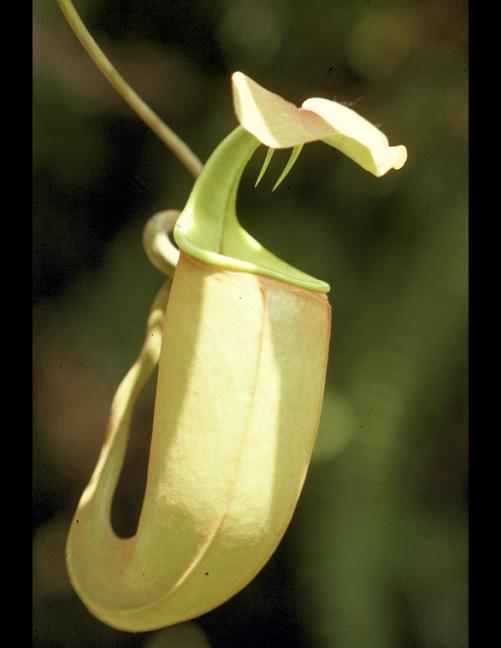
BE – 3029 Upper pitcher in habitat -

BE – 3029 lower pitcher
-
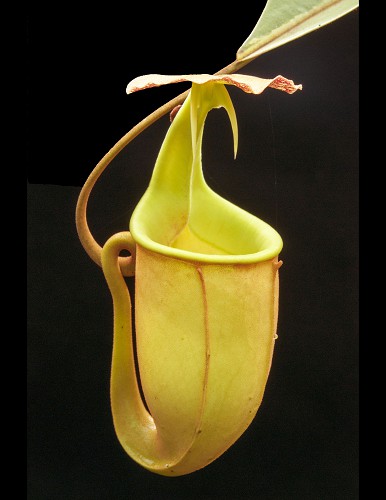
BE – 3031 Upper pitcher -
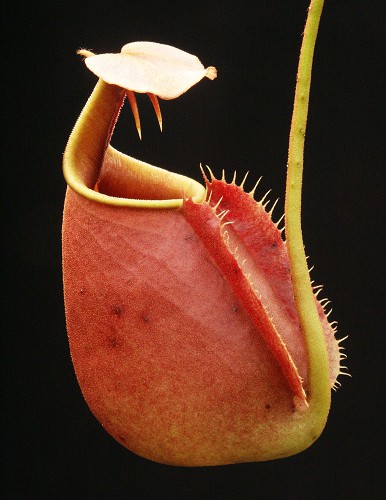
BE – 3031 Lower pitcher -

BE – 3031 Upper pitcher
-
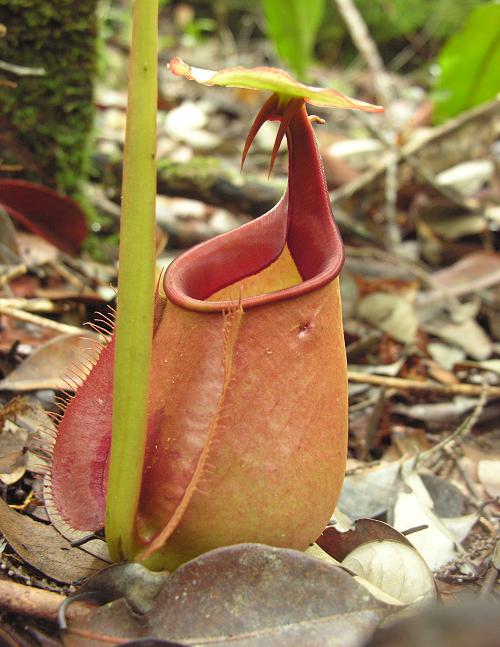
BE – 3682 Pitcher in habitat
Thank you Bruce Bednar, Manny Herrera, Normal Vollmer and Michael Hardwick for the tips on how to grow Nepenthes bicalcarata over the years!

